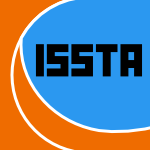12 papers:
 ISSTA-2015-RojasFA #automation #development #empirical #generative #testing
ISSTA-2015-RojasFA #automation #development #empirical #generative #testing- Automated unit test generation during software development: a controlled experiment and think-aloud observations (JMR, GF, AA), pp. 338–349.
 ITiCSE-2014-WhalleyK
ITiCSE-2014-WhalleyK- A qualitative think-aloud study of novice programmers’ code writing strategies (JLW, NK), pp. 279–284.
 CHI-2014-PikeMPSW #protocol #using
CHI-2014-PikeMPSW #protocol #using- Measuring the effect of think aloud protocols on workload using fNIRS (MFP, HAM, MP, SCS, MLW), pp. 3807–3816.
 CHI-2014-TanLS #case study #experience #game studies #video
CHI-2014-TanLS #case study #experience #game studies #video- Combining think-aloud and physiological data to understand video game experiences (CTT, TWL, SS), pp. 381–390.
 CHI-2013-McDonaldP #testing
CHI-2013-McDonaldP #testing- The effect of global instructions on think-aloud testing (SM, HP), pp. 2941–2944.
 HCI-AS-2013-HuaG #comprehension #difference #evaluation #predict #protocol #safety #usability
HCI-AS-2013-HuaG #comprehension #difference #evaluation #predict #protocol #safety #usability- Usability Evaluation of a Voluntary Patient Safety Reporting System: Understanding the Difference between Predicted and Observed Time Values by Retrospective Think-Aloud Protocols (LH, YG), pp. 94–100.
 CHI-2012-VitakIDEG #learning
CHI-2012-VitakIDEG #learning- Gaze-augmented think-aloud as an aid to learning (SAV, JEI, ATD, SE, AKG), pp. 2991–3000.
 CHI-2011-EllingLJ #eye tracking #using
CHI-2011-EllingLJ #eye tracking #using- Retrospective think-aloud method: using eye movements as an extra cue for participants’ verbalizations (SE, LL, MdJ), pp. 1161–1170.
 CHI-2011-Freeman #eye tracking #protocol #usability #using
CHI-2011-Freeman #eye tracking #protocol #usability #using- Triggered think-aloud protocol: using eye tracking to improve usability test moderation (BF), pp. 1171–1174.
 HCD-2011-HoriKK #testing #usability
HCD-2011-HoriKK #testing #usability- Investigation of Indirect Oral Operation Method for Think Aloud Usability Testing (MH, YK, TK), pp. 38–46.
 CHI-2010-Olmsted-HawalaMHA #comparison #protocol #testing #usability #web
CHI-2010-Olmsted-HawalaMHA #comparison #protocol #testing #usability #web- Think-aloud protocols: a comparison of three think-aloud protocols for use in testing data-dissemination web sites for usability (ELOH, EDM, SH, KTA), pp. 2381–2390.
 CHI-2006-GuanLCR #eye tracking
CHI-2006-GuanLCR #eye tracking- The validity of the stimulated retrospective think-aloud method as measured by eye tracking (ZG, SL, EC, JR), pp. 1253–1262.
 ISSTA-2015-RojasFA #automation #development #empirical #generative #testing
ISSTA-2015-RojasFA #automation #development #empirical #generative #testing ITiCSE-2014-WhalleyK
ITiCSE-2014-WhalleyK CHI-2014-PikeMPSW #protocol #using
CHI-2014-PikeMPSW #protocol #using CHI-2014-TanLS #case study #experience #game studies #video
CHI-2014-TanLS #case study #experience #game studies #video CHI-2013-McDonaldP #testing
CHI-2013-McDonaldP #testing HCI-AS-2013-HuaG #comprehension #difference #evaluation #predict #protocol #safety #usability
HCI-AS-2013-HuaG #comprehension #difference #evaluation #predict #protocol #safety #usability CHI-2012-VitakIDEG #learning
CHI-2012-VitakIDEG #learning CHI-2011-EllingLJ #eye tracking #using
CHI-2011-EllingLJ #eye tracking #using CHI-2011-Freeman #eye tracking #protocol #usability #using
CHI-2011-Freeman #eye tracking #protocol #usability #using HCD-2011-HoriKK #testing #usability
HCD-2011-HoriKK #testing #usability CHI-2010-Olmsted-HawalaMHA #comparison #protocol #testing #usability #web
CHI-2010-Olmsted-HawalaMHA #comparison #protocol #testing #usability #web CHI-2006-GuanLCR #eye tracking
CHI-2006-GuanLCR #eye tracking









